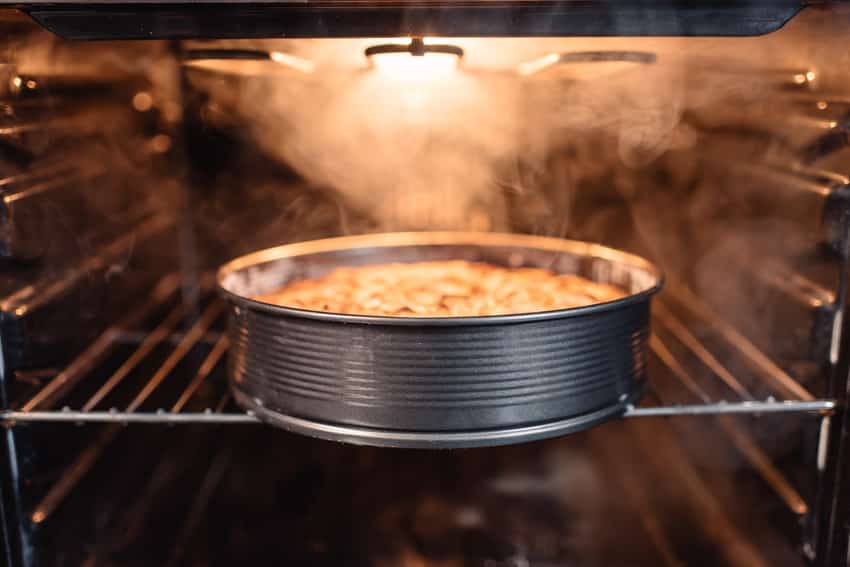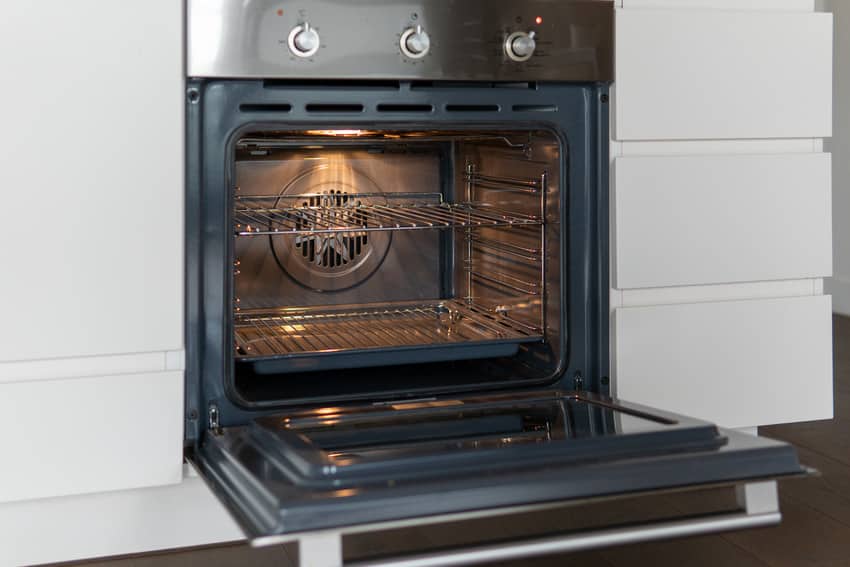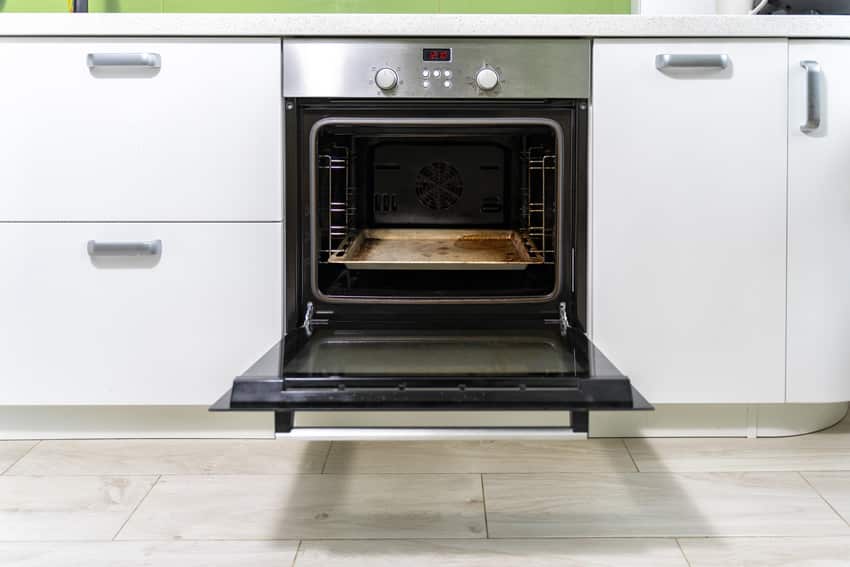Steam Oven vs. Microwave (Comparison Guide)

Every household is more or less equipped with ovens as they’re essentially considered as one of the most popular kitchen staples. However, there’s already a variety of ovens available on the market today, and choosing the best one can prove to be a daunting task for many. We will guide you through the basic differences between steam ovens vs. microwaves to help you determine which of these two cooking equipment is better suited to your taste and needs.
How Does A Steam Oven Work?
Steam ovens operate by siphoning water from a compact tank into a built-in boiler, heating it to 212°F, and then releasing the steam into the oven. Read more about our article on steam ovens pros and cons here.
You can find a water canister within the oven cavity of most steam ovens. The water is converted from the oven and ensures that moisture levels are maintained at their optimum, reducing the need for seasoning.
Steam ovens are equally as effective and perhaps even cook faster than convection ovens. Some higher-end models even come with a water line connection, eliminating the need to replenish the tank after each use.
How Does A Microwave Oven Work?
Microwave ovens are fast and efficient because they direct heat energy to the molecules (small particles) inside the food. Basically, microwaves heat food similar to how the sun warms your face: via radiation.
When you turn on the oven, the magnetron or microwave generator transforms the energy from the outlet into high-powered 12cm radio waves. Through a tube known as a waveguide, the magnetron shoots these waves into the food compartment.
The food is then placed on a platter that rotates slowly to cook it evenly. Microwaves bounce back and forth off the food compartment’s reflective metal walls, just as light bounces off a mirror.
Vibrating molecules generate heat; thus, the hotter the meal gets, the quicker the molecules vibrate. As a result, microwaves transfer their energy to the molecules in the meal, quickly heating it.
Steam Oven vs. Microwave Oven Comparison
Let’s take a look at the following features of a steam oven and a microwave oven, weigh their pros and cons, and check which is superior between the two.
Easy to use (Microwave)
Microwaves are popular not just because they are inexpensive but also because they are easy to use: just place your food and set the timer for the cooking time.
Meanwhile, it generally takes some practice to find the optimum cook time for your food in a steam oven.
Speed (Microwave)
You can easily cook and heat food faster in a microwave oven than in a steam oven. Reheating leftovers in a steam oven would often take about 10 minutes.
Alternatively, that would only take around 3 to 4 minutes in a microwave because the food easily absorbs the radiation.
Reheating (Microwave Is Faster, But The Flavor Of The Steam Oven Is Superior)
When it comes to fast reheating, the microwave reigns supreme. Still, some people actually prefer the quality and flavor of food warmed in a steam oven better.
If you have time to spare, using a steam oven will help you recreate a special dish that will retain its texture and enhance its flavor.
Meanwhile, the microwave also heats food unevenly unlike a steam oven. The latter can also reheat several foods at the same time.
Taste (Steam Oven)

There’s no contest; the food definitely tastes better when cooked in a steam oven. This is because the food locks in more nutrients, flavor, and consistency when cooked in one. While a microwave tends to dry up food quickly, a steam oven constantly provides moisture to the food.
Steam ovens heat food considerably more uniformly and exclusively from the outside, typically ‘crisping’ the exterior for a more pleasing food quality.
Cost (Microwave)
Microwaves are generally more affordable than steam ovens. The cheaper versions may cost you as little as $30, while high-end models may require you to spend as much as $1000 and more.
Conversely, the price of a steam oven usually starts at $2000 for a wall unit, while a countertop unit costs around $300. Moreover, high-end versions may require you to spend up to $8000. If you are opting for an inexpensive unit, a microwave is your best choice.
Size (Vary In Size Depending On The Model, Although Microwaves Are Usually Smaller)
Microwaves are normally smaller than steam ovens.
Make sure you have an extra space in your kitchen if you’re considering buying a steam oven since they’re usually bigger in size, including countertop steam ovens and combination steam ovens. Read more about our article on essential small kitchen appliances here.
Easy To Clean (Microwave)
A microwave oven is generally much easier to clean and maintain compared to a steam oven.
After each use, thorough cleaning of a maximum oven is required; otherwise, it may acquire an unpleasant odor that will affect the flavor of future cooked meals.
The good news is that many higher-end steam ovens include a self-cleaning feature for those that lack the time or energy to clean.
Best For Defrosting (Steam Oven)
Microwaving is faster, but defrosting in a steam oven is slow but more uniform. It is gentle on your food, and you will never have to worry about partly cooked food.
Health (Steam Oven)
Cooking using a steam oven at high temperatures naturally preserves more minerals and nutrients than cooking in a microwave. Moreover, there is no need to use oil which is a welcome bonus health benefit.
Does A Steam Oven Replace A Microwave?

Over the last years, microwave ovens have had more relevance in our kitchens than any other equipment. In fact, more than 90% of American households have one. So, it’s safe to say that a steam oven still has a long way to go to replace the value of microwave ovens in any household kitchen.
Can You Use A Steam Oven As A Microwave?
We overlooked a trade-off for years in favor of convenience. Microwaved food, in general, does not taste all that great. Many chefs actually favor food quality and flavor above cooking efficiency, and a steam oven may just provide you both.
Still, the aim of this article is not to cast doubt on microwaves. There are still plenty of advantages to keeping a regular countertop microwave for cooking convenience, like making the perfect popcorn for a good old snack!
Which Is Better: A Steam Oven Or Microwave?

Ultimately, it’s still up to your needs and wants whether you’d consider investing in a microwave oven or a steam oven. However, there’s no denying that steam ovens are growing more popular nowadays, thanks to their excellent ability to enhance the food quality and basically just being a better version of a microwave oven.
If you’re looking for something that’s great for reheating instead of cooking, you can save a lot by buying a microwave instead. Microwaves are compact, easy to use and clean, and can reheat meals quickly.
But, if your budget permits and you’d actually prefer a kitchen equipment that can cook a wide range of meals much quicker, tastier, and healthier than a conventional or microwave oven, then a steam oven is your best bet.






